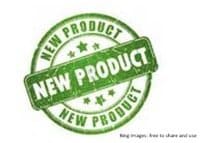
Five on Friday: Product Marketing, Development and Research for CEOs
Lorem ipsum dolor sit amet, consectetur adipiscing elit. Ut elit tellus, luctus nec ullamcorper mattis, pulvinar dapibus leo.
As the curator of the INSIDER Guide to New Product Development (NPD), I'm constantly keeping an eye out for bite-size information that will help you develop and scale better subscription products. Here's my "Five on Friday" compilation for May 13th, featuring the five best trends, tips, quotes or stats from my reading this week. 1. Another Product Marketing Commandment from Pragmatic Marketing A few weeks ago, I included on of the Pragmatic Marketing's Ten Commandments of Product Marketing in...
HELLO!
This premium article is exclusively reserved for Subscription Insider PRO members.
Want access to premium member-only content like this article? Plus, conference discounts and other benefits? We deliver the information you need, for improved decision-making, skills, and subscription business profitability. Check out these membership options!
Learn more about Subscription Insider PRO memberships!
Already a Subscription Insider PRO Member?
Please Log-In Here!








